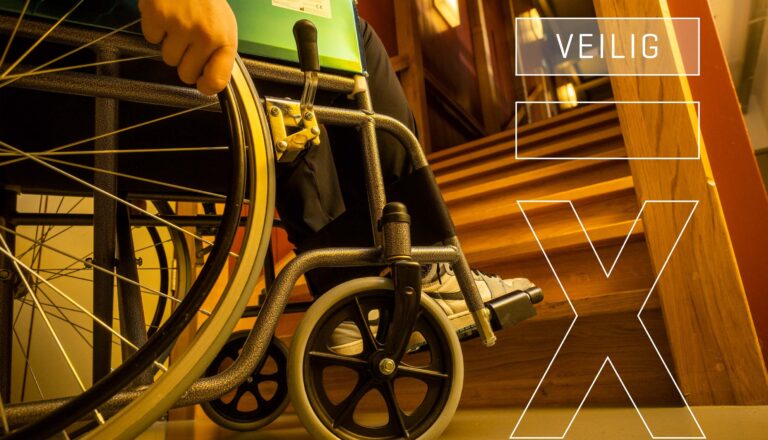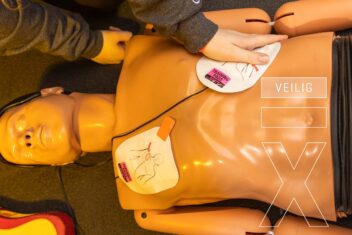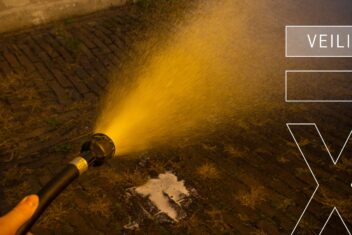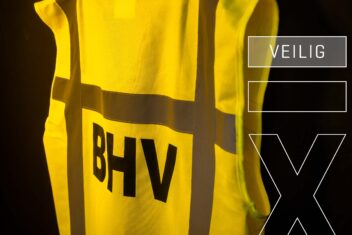Emergency response training tailor-made for increased healthcare safety

A health and safety officer in healthcare, is it necessary? Yes, very much needed indeed. Emergency response is more than just applying a plaster, putting someone in a stable side position or being able to perform CPR. That is the first aid part of first aid. And so these are skills that most care workers master just fine. But evacuating, responding to accidents involving hazardous substances or fighting fires? That is what we teach them. In special in-house emergency response training courses for the care sector.
When are in-house emergency response workers needed?
Every organisation where employees work or where visitors come is obliged to employ in-house emergency officers. These are employees who have been trained through an emergency response course. They know what to do if there is a fire in the building, if an accident occurred or if people become unwell.
Risks per industry
The risks you face in a workplace naturally vary enormously from one sector to another. In a metalworking company, the dangers are different from those in a law firm. The same applies to the healthcare sector; there too, there are specific situations you need to be aware of. So that if something happens, you know what to do.
Non-mobile or non-self-sufficient: patients in care
The care sector also faces an additional responsibility; clients or patients who are non-mobile or non-self-reliant. Whether they are babies or the elderly, whoever works there needs to know how to get these people out of the building in case of an emergency. While, of course, the lift cannot be used.
Life-threatening situations
In short, different risks apply in a care institution than in other companies. And while employees know very well what to do in case of an accident, it is also very important that they are well trained in situations they are less likely to encounter. But which can be life-threatening.
Emergency response training
We train them for those kinds of situations. With the in-house emergency response training courses we give on location or at our locations. These safety training courses are never the same. We tailor them to the customer's situation. What are they dealing with? What risks are there? What special circumstances do we have to take into account?
Training on the risks in your care institution
The RI&E is an important part of determining what an emergency response worker should be trained in. With the information from that document and what is discussed further or what we see ourselves on site, we develop realistic scenarios. This way, we really train on the situations and risks in your care institution.
Mimicking situations
These scenarios are necessary because not all situations can be trained in real life. An evacuation drill in a care facility where most patients are in bed and cannot walk themselves is obviously not an option. Nevertheless, all in-house emergency response workers must know exactly what to do if an evacuation is ever necessary. That is why we work with scenarios in which we simulate realistic situations.
Interactive tools
For those scenarios, we now have a range of interactive tools at FeniksGroup. This way, the future emergency worker directly experiences the consequences of his or her actions. An approach that repeatedly proves to be extremely effective.
Well-trained emergency response team
FeniksGroup develops customised in-house emergency response training for care institutions. So that you not only have a trained team of in-house emergency response workers, but a well-trained team on which you and the patients or clients in your institution can really rely.
Appropriate action = (knowledge + experience) x repetition
Want to know more? Ask us!
Would you like to know more about our customised in-house emergency response training for the healthcare sector? Or would you like to know more about on-site emergency response training? Feel free to ask us. We will be happy to discuss the possibilities with you to make more safety possible in your care sector too.
February 19, 2020
Sharing is allowed, gladly even!

Would you like more information about our training courses, or do you have another question?
Fill in the form, we will contact you asap!
You hereby grant permission to FeniksGroup to contact you. Your contact details will not be shared with third parties.
Want to receive the latest safety insights in your mailbox?
Sign up for free!
No spam. You can unsubscribe at any time.


